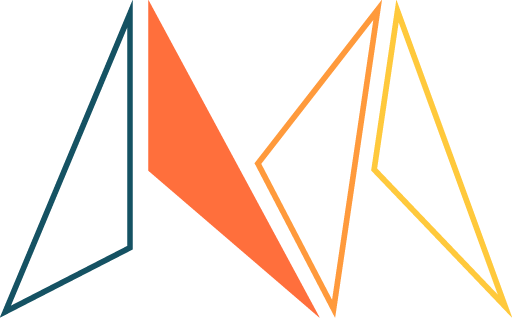Summary
In this teaching activity, students learn to attune with nature in their local area. They do this through different attunement and noticing activities that they design. Students document their attunement process through producing material for an exhibition where they share the outcome of their affective relations with more-than-humans in an environment (a natural environment or an urban environment) that they engaged with over a couple of weeks.
Students are introduced to the design methods: collage and diary studies and how these can be combined with the attuning-with method to document the environment.
Students work in pairs to explore the environment by attuning with the more-than-humans in that environment. The explorations are documented through photos, drawings, and creative writing.
Their documented experiences are presented on, for example, a poster, as video-, or sound recordings, and items that they gathered in the field.
Motivation
This teaching activity engages students in relating to environments in other ways compared to what the natural and the social sciences prescribe when studying an environment (a natural environment or an urban environment). By using methods for attuning-with and relating to an environment that includes personal, embodied, poetic and affectionate ways, students become familiar with an environment beyond ordinary field studies. The poetic ways of relating can be captured through a collage that prompts visual languages like photography and drawings, and diary studies that prompt creative writing. The expectation of poetic visual and written documentation thus encourages students to engage in embodied, affectionate, and creative ways that entangle human action with elements of a specific environment. These experiences can foster ideation in later stages of the design process including elements of cohabitation such as living-with and making-with.
Learning outcomes
After the teaching activity students should be able to:
- Relate in embodied and affectionate ways with more-than-humans in a chosen environment.
- Design ways of attuning-with elements of the environment during a series of field studies,
- Describe and illustrate experiences of attuning-with through photos, drawings, collages and creative writing.
- Discuss through informal dialogues about what ‘attuning-with’ means to designing/making with more-than-humans.
Teacher guidance
Preparations:
Bring A1 poster paper, notebooks, pens and markers, cameras (mobile phones).
Step 1: Lecture, Group size: All, Time: 60 min
The teacher introduces students to ways of ‘attuning-with’ as described in Riley and White (2019). The field study task introduced: to design ways of attuning with more-than-humans in a chosen environment. Finally, the teacher covers documentation methods such as photography and drawing that can be arranged in a collage (as a poster), and creative writing as a way of documenting things in a diary that can also contain drawings. The teacher also encourages the students to study the natural-cultural-historical background of the environment that they chose to attune-with.
Step 2: Group work, Groups size: 2, Time: two weeks
Students work in pairs where they identify an environment that they would like to visit through several field trips for a period of weeks. When they go to the chosen environment, they should come up with attuning-with activities that they perform in the environment. To prepare, the students are encouraged to study the natural-cultural-historical aspects of the environment, to keep in mind while coming up with the attuning-with activities. The ways they attuned-with more-than-humans in that environment are documented through photos, drawings, and creative writing.
Students create posters to gather and present documentation of their experiences as selected photos, drawings, and creative writing. These materials should document how they attuned-with more-than-humans in the selected environment, and as well their experiences.
Step 3: Share in class, Groups size: All, Time: 120 min
The teacher prepares an exhibition space where students can bring and exhibit their posters with collages of various documentation of their ‘attuning-with’ experiences in an exhibition space (maybe a classroom) organised by the teacher.
Note: the exhibition format may also go beyond the poster format and include installations, video, audio and other materials. Still, the exhibition should be like a typical poster presentation where students can walk around in the exhibition space and talk to each other. When the posters are hung on the walls of the exhibition space, students take turns staying next to the poster to present it and walk around to see the other posters. During the exhibition, the students are encouraged to engage in dialogues with each other and discuss the exhibited material. They should reflect on what the different activities of attuning-with mean to a design process that includes more-than-humans.
Questions for assessment
- How did you engage in embodied ways with the more-than-humans in the environment that you attuned-with?
- What did the experiences from attuning-with make you feel?
- Did the attunements change your relationship with the more-than-humans that you engaged with?
Recommended readings
Riley, Kathryn, and White, Peta. (2019). ‘Attuning-with’, affect, and assemblages of relations in transdisciplinary environmental education. Australian Journal of Environmental Education 35, 262–272. https://doi.org/10.1017/aee.2019.30
Martin, Bruce, and Hanington, Bella (2019). Universal methods of design: 125 ways to research complex problems, develop innovative ideas, and design effective solutions. USA: Rockport Publishers.
Category

Assemblage
Duration
In class: 3 hours
Self-study: 2 weeks
Materials
Credits
This teaching activity is inspired by the methods collage (Martin and Hanington 2019, p. 46-47), diary studies (Martin and Hanington 2019, p. 88-89) and the concept and activity of ‘attuning-with’, explored by Riley and White (2019).
Riley, Kathryn, and White, Peta (2019). ‘Attuning-with’, affect, and assemblages of relations in transdisciplinary environmental education. Australian Journal of Environmental Education 35, 262–272. https://doi.org/10.1017/aee.2019.30
Martin, Bruce, and Hanington, Bella (2019). Universal methods of design: 125 ways to research complex problems, develop innovative ideas, and design effective solutions. USA: Rockport Publishers.
